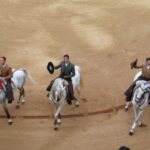The word moose originates from the Algonquin Indians who lived in the southeastern part of New York State. They also lived along the Ottawa River in Canada. They called these huge animals mooswa which means twig eater. Moose are the largest and strongest member of the deer family. The Alaskan moose is not only the largest member of the deer family but is the largest of its species. Adult Bull Moose can weigh up to 1,600 pounds and the Cow Moose can weight up to 1,200 pounds. Weight can fluctuate depending on how much food is available. Moose are built for running and can run up to 35 miles an hour.
Moose in Alaska are mostly found in the southcentral and interior areas where they inhabit forest and river valleys. They can also be seen from downtown Anchorage to the tip of the Kenai Peninsula. Moose can be spotted near the road on the lower Kanai Peninsula. Always be careful not to get to close to a moose because they can attack especially if a mother that has a calve with her. Northeastern and Northwestern Minnesota are very populated with moose. North-central Ontario and the southern part of British Columbia are also said to be heavily populated with moose.
Moose are herbivores because they don’t eat meat and only eat plants. Moose have teeth and a digestive system that suits a plant diet. Moose can consume as much as 100 pounds of plants or more each day. Their stomachs are able to hold up to 112 pounds of food at one time. The moose diet changes according to the season. Winter can make it difficult for moose to find adequate food. Long legs make walking through deep snow easier but moose usually keep away from snow deeper than 36 inches. It’s takes a lot of energy and work to get to plants in vegetation when the snow is extremely deep. Moose will eat many twigs and shrubs during the cold season such as red osier, balsam fir and willows and striped birch. Twigs are comprised of 50% water so moose don’t need to drink as much if they consume a lot of twigs.
Moose eat a lot during the warmer months and become fat. The fat will give them the extra energy reserves they need when winter arrives and their diet may not be as good. The summer moose diet consists of broad leaved tress, grasses and garden vegetables. Rivers, lakes and ponds are often occupied by moose where they eat a lot of water or aquatic plants, pond lilies and pond weeds. They eat the plants below the surface as well as on top. They are excellent swimmers and can swim as fast as 36 miles per hour. They can also dive over 5 miles for food at the bottom of a lake.




